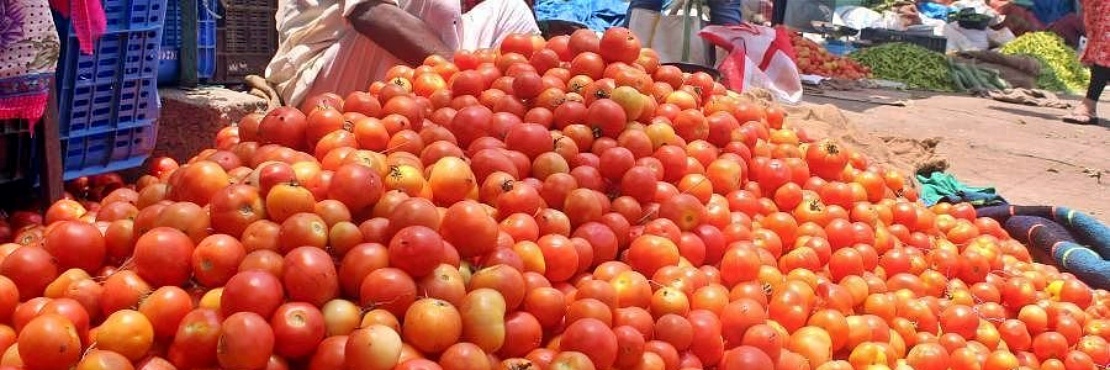G Ananthakrishnan of Times of India writes:
Unaffordable and scarce staple vegetables like tomatoes and onions provoke public anger and challenge political strategies that merely use perceptions to manage voters. The current prolonged price spiral driving tomatoes out of everyday recipes — at anything between Rs 90 and Rs 200 a kilo — is a headache for governments, leaving them clutching at intervention solutions that have rusted over time.
A tomato crop is not a long range prospect, raising the promise of adding to Chennai’s supply through gardens and rooftop producers. There are anecdotal stories of Chennai residents augmenting vegetable supplies with a green roof, while community gardens such as the one in Kasturba Nagar, drew volunteers to work on a large patch.
Caught in the headlights of a price surge, the Tamil Nadu government, like many others, has been talking about alternative supply mechanisms including the public distribution system and mobile vending. But it seems not to have pitched its own Chennai urban horticulture and rooftop garden initiative of 2019 under which the Greater Chennai Corporation, smart city bodies and NGOs were to collaborate on robust horticulture pilots in Chennai corporation schools.
Indians living in USA report growing tomatoes in raised beds at home after planting seeds from the fruit bought at the local Indian store, amid soaring food price inflation. Cuba is also noted for its urban agriculture, launched with the multiple goals of reducing cost on inputs, notably scarce chemical pesticides, and transport from distant areas.
Scalability of urban agriculture, which can range from small rooftop gardens to full fledged farms, is a key attribute in achieving a viable supply of produce. Europe’s largest rooftop farm in the city of Paris, Nature Urbaine, which operates using hydroponics (soilless) and aeroponics (using mist spray watering of exposed roots) across 1. 5 lakh sq.ft. is capable of producing 10 tonnes of produce each season.
An expansion of urban farming may also have a salutary effect on Chennai’s microclimate, with properly designed green roofs bringing a cooling effect and producing a bonus of vegetables for local use. Vertical farms, edible walls and open rooftop installations are cited as examples, and institutions with large spaces, such as hotels, could grow for their own consumption.
Decentralized urban markets for vegetable farmers to directly sell to consumers using local body infrastructure or helping retailers source directly from farmers through policy interventions could have a moderating effect on prices. Reviving and extending the few farmers’ markets that operated in the city suburbs for a few years after 1999 should move up the priority list, coupled with supply-side measures that directly benefit farmers.
An alternative could be to come up with contract farming policies using cooperatives that would use empty lands to produce vegetables using organic practices that would boost supply and make better use of empty land. Cutting out speculative forces and special interests in the horticulture trade will help both farmers and consumers and solve a future tomato crisis.
Read more: Why green roofs may be answer to Tamil Nadu’s tomato blues
 Greenroofs.comConnecting the Planet + Living Architecture
Greenroofs.comConnecting the Planet + Living Architecture









